Table of content
Stir-fried lemon duck, a dish that tantalizes the taste buds with its harmonious blend of tangy citrus, savory umami, and tender meat, is a culinary gem that originated in Southern China. Over the years, it has gained international acclaim for its vibrant flavor profile and refreshing twist on traditional duck preparations. This article delves into the intricacies of crafting this dish, from selecting the finest ingredients to mastering the cooking techniques that elevate it from ordinary to extraordinary. Whether you are a seasoned home cook or a curious novice, this guide will equip you with the knowledge to recreate this restaurant-quality meal in your own kitchen.
The Essence of Stir-Fried Lemon Duck
At its core, stir-fried lemon duck is a celebration of balance. The richness of duck meat, known for its gamey depth and tender texture, is countered by the bright acidity of lemons and the aromatic punch of garlic, ginger, and chili. The dish is typically finished with a glossy sauce that clings to each piece of meat, creating a symphony of flavors that is both comforting and invigorating. Unlike heavier duck dishes, such as Peking duck or confit, this preparation is light, quick, and perfectly suited for warm weather or when you crave a meal that feels vibrant and alive.
Ingredients: The Building Blocks of Flavor
To embark on this culinary journey, you must first assemble your ingredients. Each component plays a pivotal role in shaping the dish’s character.
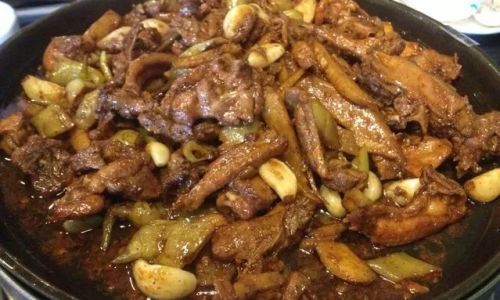
For the Duck Marinade:
- 500g duck breast or thigh meat: Opt for skin-on, boneless cuts for optimal flavor and texture. Duck fat renders beautifully during cooking, adding richness to the dish.
- 2 tbsp soy sauce: Use a high-quality dark soy sauce for depth, or light soy sauce for a saltier finish.
- 1 tbsp Shaoxing wine: This Chinese cooking wine imparts a subtle sweetness and eliminates any gamey notes in the meat.
- 1 tsp cornstarch: Acts as a tenderizer and helps the meat develop a velvety texture.
- 1 tsp sesame oil: Adds a nutty aroma and enhances the dish’s fragrance.
For the Stir-Fry Base:
- 3 tbsp vegetable oil: Neutral oils like peanut or canola work best to avoid overpowering the dish.
- 4 garlic cloves, minced: Garlic provides a pungent backbone to the sauce.
- 2-inch piece of ginger, julienned: Ginger adds warmth and a hint of spice.
- 2 red chili peppers, thinly sliced: Adjust according to your spice tolerance; fresh bird’s eye chilies offer the most authenticity.
- 1 lemon: Both zest and juice are used—zest for aromatic intensity, juice for acidity.
- 1 medium onion, sliced: Onions contribute sweetness and texture.
- 1 bell pepper (any color), thinly sliced: Adds color and a mild crunch.
- 1 cup chicken broth: Low-sodium broth allows for better control over the dish’s saltiness.
- 2 tbsp oyster sauce: A briny, umami-rich condiment that thickens the sauce.
- 1 tbsp sugar: Balances the tartness of the lemon.
- 1 tbsp rice vinegar: Enhances the brightness of the dish.
- 1 tsp white pepper: Offers a subtle heat without overwhelming the palate.
- 2 tbsp fresh cilantro, chopped: For garnish and freshness.
Preparation: The Key to Precision
Before igniting the stove, meticulous preparation ensures a seamless cooking process.
-
Marinating the Duck:
- Slice the duck meat into thin, bite-sized strips against the grain. This ensures tenderness and even cooking.
- In a bowl, combine the duck with soy sauce, Shaoxing wine, cornstarch, and sesame oil. Massage the marinade into the meat, ensuring each piece is coated. Let it rest for 20–30 minutes at room temperature or up to overnight in the refrigerator. Marinating allows the flavors to penetrate the meat and tenderizes it.
-
Prepping the Aromatics and Vegetables:
- Zest the lemon, avoiding the bitter white pith. Juice the lemon and set both aside.
- Julienne the ginger into matchstick-sized pieces. Mince the garlic and slice the chili peppers, onions, and bell peppers.
-
Mise en Place:
Arrange all ingredients near your stove. Stir-frying is a rapid process, and having everything within reach prevents overcooking or burning.
Cooking Technique: The Dance of Fire and Wok
Stir-fried lemon duck thrives on high heat and quick movements. A carbon-steel wok is ideal for its ability to retain and distribute heat efficiently, but a large skillet can suffice.
Step 1: Searing the Duck
- Heat 1 tbsp of vegetable oil in the wok over high heat until it shimmers.
- Drain the excess marinade from the duck (reserve it for later use). Add the duck pieces to the wok in a single layer, ensuring they are not overcrowded. Overcrowding lowers the wok’s temperature and steams the meat instead of searing it.
- Sear the duck for 2–3 minutes per side until golden brown. The goal is to caramelize the exterior while keeping the interior juicy.
- Remove the duck from the wok and set it aside.
Step 2: Sautéing the Aromatics
- Add the remaining 2 tbsp of oil to the wok. Toss in the garlic, ginger, and chili peppers. Stir-fry for 30 seconds until fragrant but not browned. Burnt garlic will impart bitterness, so vigilance is key.
Step 3: Building the Sauce
- Pour in the reserved marinade, chicken broth, oyster sauce, sugar, rice vinegar, and white pepper. Stir vigorously to combine.
- Allow the sauce to simmer for 2–3 minutes, reducing slightly. This concentrates the flavors and thickens the liquid.
Step 4: Adding the Vegetables
- Toss in the onions and bell peppers. Stir-fry for 2–3 minutes until they soften slightly but retain their crunch.
Step 5: Reuniting Duck and Sauce
- Return the seared duck to the wok. Add the lemon zest and juice. Toss everything together to coat the meat evenly.
- Cook for an additional 2 minutes, allowing the duck to absorb the sauce’s flavors. The cornstarch from the marinade will thicken the sauce slightly, creating a glossy finish.
Step 6: Final Touches
- Remove the wok from heat. Stir in the cilantro, reserving a small amount for garnish.
- Taste and adjust the seasoning with extra soy sauce, lemon juice, or sugar if needed.
Serving Suggestions: Elevating the Experience
Stir-fried lemon duck is a versatile dish that pairs beautifully with a variety of accompaniments.
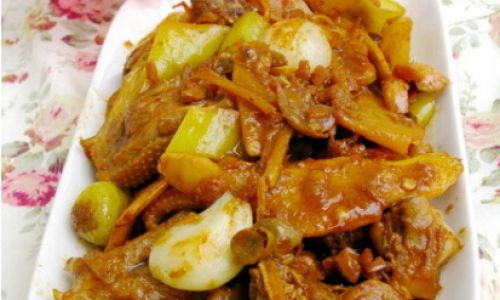
- Steamed Jasmine Rice: The fluffy grains absorb the sauce beautifully, making every bite a delight.
- Chilled Noodles: Serve over cold soba or udon noodles for a refreshing contrast.
- Stir-Fried Greens: Broccoli, bok choy, or spinach add nutrients and texture.
- Garnishes: A sprinkle of toasted sesame seeds or a drizzle of chili oil enhances visual appeal and flavor.
Variations and Customizations
One of the joys of stir-fried lemon duck is its adaptability. Experiment with these tweaks to suit your palate:
- Protein Swap: Replace duck with chicken, shrimp, or tofu for a lighter alternative.
- Citrus Twist: Substitute lemons with limes or yuzu for a different acidic profile.
- Spice Level: Add dried chili flakes or Sichuan peppercorns for a numbing heat.
- Vegetarian Version: Use mushrooms, tempeh, or seitan as the star ingredient.
Troubleshooting Common Pitfalls
Even seasoned cooks encounter hiccups. Here’s how to remedy them:
- Soggy Duck: Ensure the wok is scorching hot before searing. Avoid overcrowding the pan.
- Bitter Sauce: Use only the lemon zest’s yellow part and avoid overcooking the garlic.
- Bland Flavor: Amplify the dish with a splash of fish sauce or a pinch of MSG (optional).
- Overcooked Vegetables: Add delicate vegetables like bell peppers toward the end of cooking.
The Cultural Tapestry of Stir-Fried Lemon Duck
Beyond its culinary appeal, stir-fried lemon duck carries cultural significance. In Southern China, particularly in Guangdong province, lemon duck is a beloved home-cooked meal served during family gatherings and festive occasions. The lemon’s acidic properties were historically believed to aid digestion and balance the body’s qi, making it a staple in traditional medicine-inspired cuisine. Today, the dish symbolizes harmony—the union of contrasting elements into a cohesive whole.
Conclusion: A Dish That Dazzles
Stir-fried lemon duck is more than a recipe; it’s an exploration of texture, aroma, and taste. Mastering it requires patience, precision, and a willingness to embrace the alchemy of the wok. Whether you’re hosting a dinner party or seeking a weeknight indulgence, this dish promises to impress. So, don your apron, gather your ingredients, and let the sizzle of the wok guide you toward a meal that is both humble and extraordinary. With practice, you’ll find that the dance of fire and flavor is not just a cooking technique—it’s an art form.
Word Count: 1,420



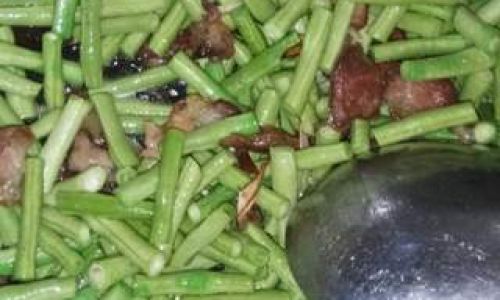
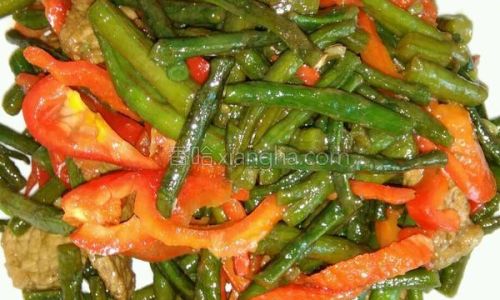
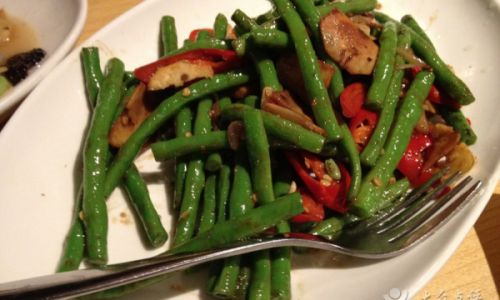
0 comments